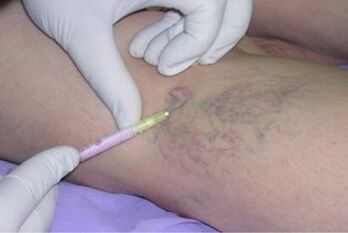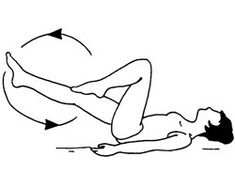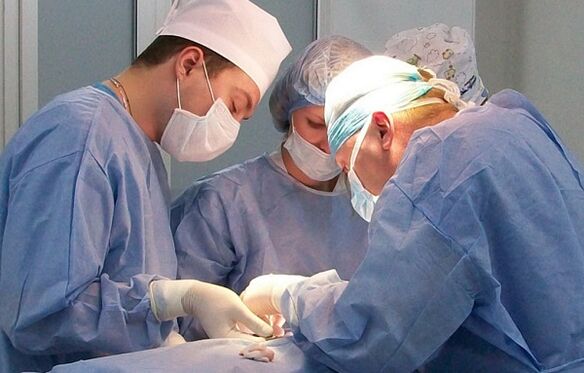
Varicose veins of the lower extremities is a chronic disease, accompanied by multiple vasodilatation of the legs. The main causes of varicose veins are hereditary predisposition, excessive exercise or sedentary lifestyle. Women are especially prone to this disease after childbirth. In men, varicose veins in the legs may be associated with the presence of arterio-venous messages.
It is advisable to consult a doctor at the first signs of varicose veins, which include nodular changes in the veins, pain and swelling of the legs and feet. After examination and accurate diagnosis, the doctor will determine how to treat varicose veins in the legs in each case.
Conservative therapy
Conservative therapy for varicose veins is very diverse and can only reduce the manifestations of the disease, but can not cure the cause.
Diet and compression
Special exercises for varicose veins that anyone can do at home. It is aimed at strengthening the leg muscles, which helps keep the arteries in good condition. The most effective are:

- Cycling: Lie on your back and move your legs in a circular motion.
- Roll the tennis or baseball ball on the floor with your feet. If you use a special massage ball, you can improve microcirculation.
- When standing on tiptoes, the calf muscle is well trained to squeeze the varicose veins.
- Swimming with a board will help to get all the leg muscles in excellent physical shape with minimal stress.
An overweight diet that contains fiber and limits the intake of animal fats and carbohydrates reduces stress on the feet and can be used successfully to treat varicose veins at home.
Knitwear (above the knee, socks) for the treatment of varicose veins differs in the degree of compression. You often need to use special devices to put it properly at home. Need to wear underwear during the day, just remove at night. The principle of action is based on the external compression of varicose veins of the legs and the improvement of blood flow. Instead of a medical uniform, to treat varicose veins, you can use an ordinary elastic bandage wrapped in a spiral, holding an ankle from your fingertips to the middle of the thigh. It is important that the new queue coincides with at least half of the previous one.
A pneumatic massager with a series of cuffs that include air under pressure can be effective in treating varicose veins in the early stages of the disease. In this case, the compression method is used because it improves blood circulation and reduces edema. You can use this device at home.
Medications
It is recommended to treat varicose veins in the legs with ointments and tablets only at the beginning of the disease or with the development of complications.
The main classes of drugs include:
- Verotonics increases vascular tone, eliminates edema and improves peripheral blood flow.
- Drugs that improve microcirculation are effective when taken orally or in the form of droppers.
- Antiplatelets that prevent blood clotting.
- Non-steroidal anti-inflammatory drugs to reduce pain and swelling in varicose veins.
The use of all medications should be discussed with your doctor as side effects are likely.
It is not possible to treat varicose veins using traditional methods, you can only slow down the process and delay the appearance of serious complications, such as thrombophlebitis.
When the operation is displayed
Surgical treatment of varicose veins does not always involve open surgery. Thanks to modern development, varicose veins in the legs are likely to be removed on an outpatient basis. The following radical treatments are most commonly used:
- Sclerotherapy is based on the insertion of a substance into the lumen of the affected vessel, which sticks it together and removes it from the bloodstream. This method is suitable for small diameter vessels in the early stages of the disease. The recurrence rate reaches 30%.
- Radiofrequency ablation and laser ablation are modern and effective treatments that destroy the lining of the vessel. It is performed under local anesthesia and does not leave marks on the skin.
- Phlebectomy - direct removal of the vessel through small incisions. This method allows you to treat varicose veins, but because the operation is very traumatic and the rehabilitation period is long, it gradually fades into the background.

How traditional medicine can help
Varicose veins of the legs are a very common problem, including pregnant women, where traditional treatment is contraindicated. For this reason, many recipes for folk remedies have been created at home to reduce the manifestations of this disease:
- An ordinary hops decoction is taken in a glass three times a day. To prepare, take a tablespoon of crushed cones and pour boiling water over it.
- When treating with apple cider vinegar, you should rub your feet with them daily for a month and drink a teaspoon of water dissolved at the same time.
- Sliced green tomatoes or grated raw potatoes can be applied to hard buds overnight.
- The substances that make up horse chestnut have a tonic effect on the arteries. To prepare a liter of tincture you need to pour 50 g infusion of vodka for two weeks. Drink 2 tablespoons three times a day.
- To prepare an effective ointment, take a teaspoon of dry St. John's wort. Apply three times a day for a week under a plastic bandage.
Our grandmothers' recipes are not always effective, but they allow you to treat varicose veins at home when there is no other option. Do not abuse it, it is better to contact a vascular surgeon for examination and treatment.
An inherited factor in the development of varicose veins, an unhealthy lifestyle and excessive stress on the legs play a role. Exercise and diet can help reduce the likelihood of this condition and slow the onset of symptoms. However, varicose veins can be treated surgically only after a thorough examination.













































